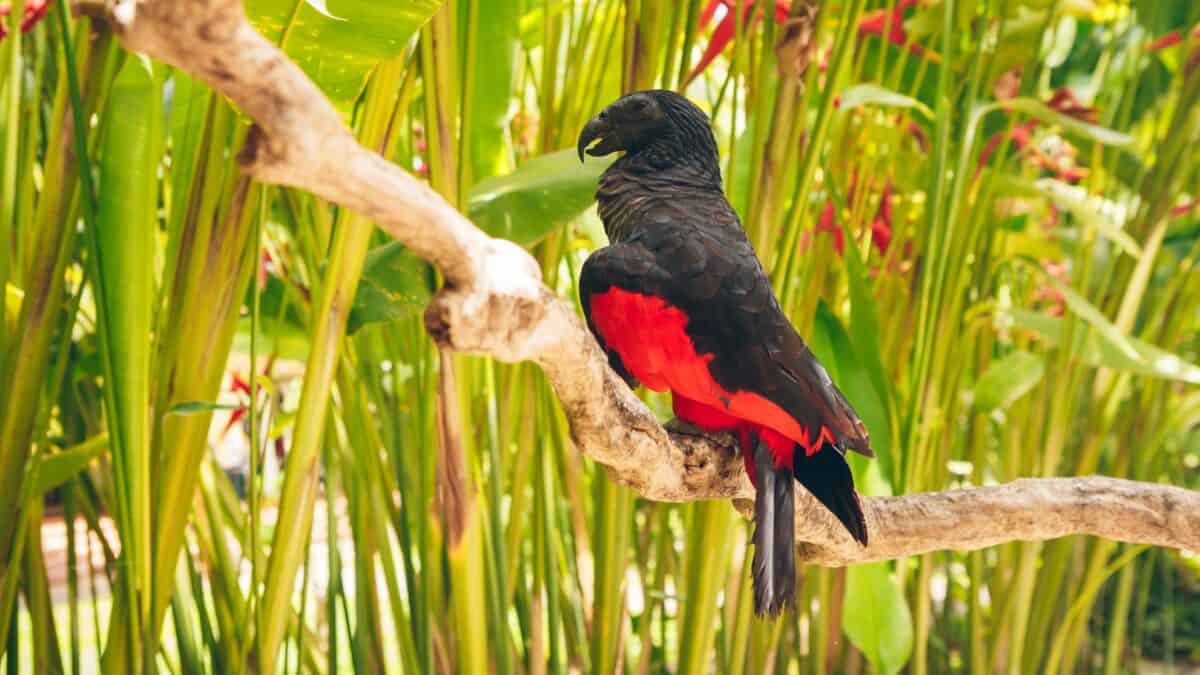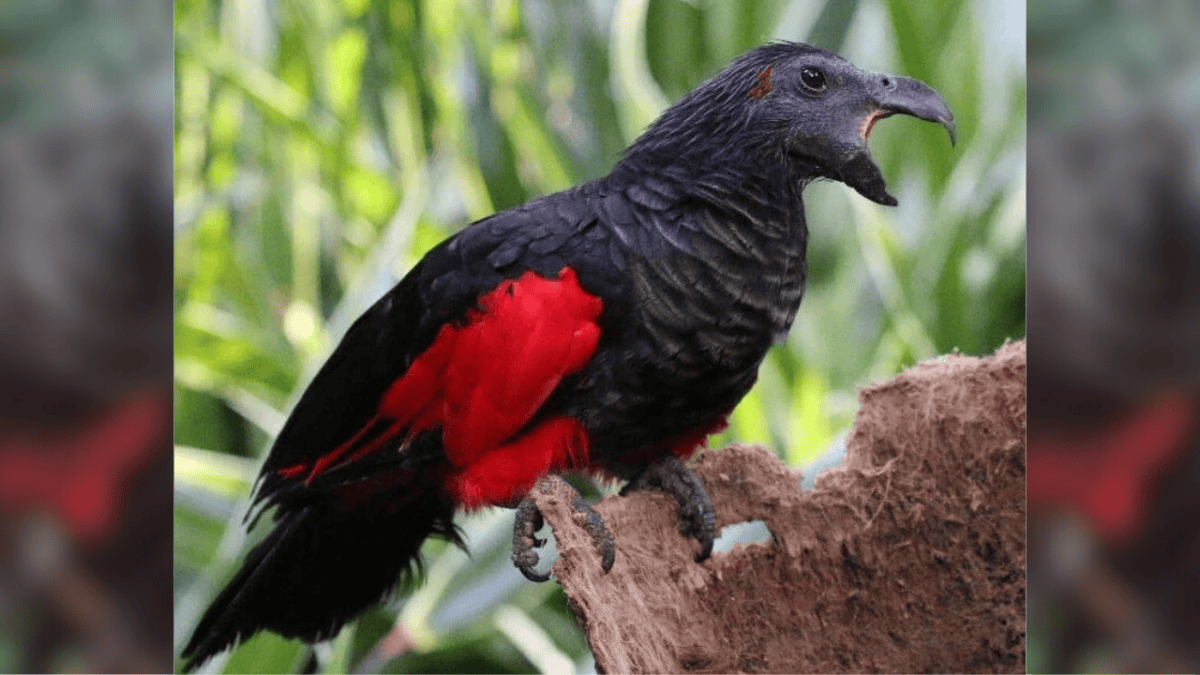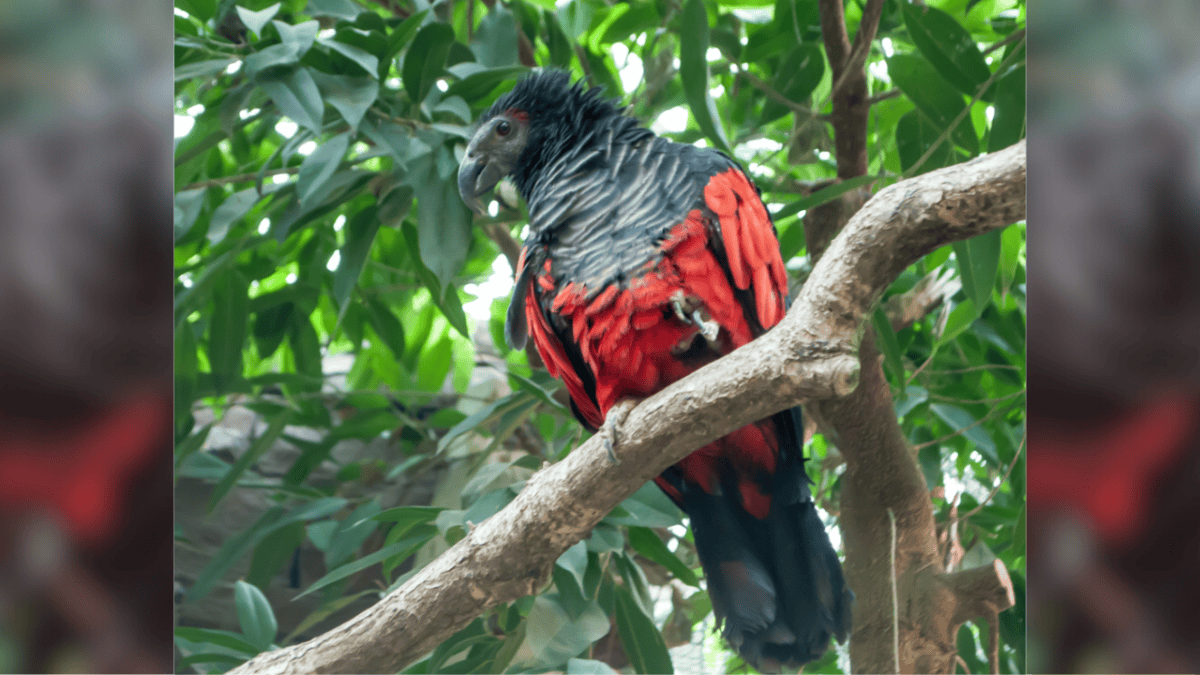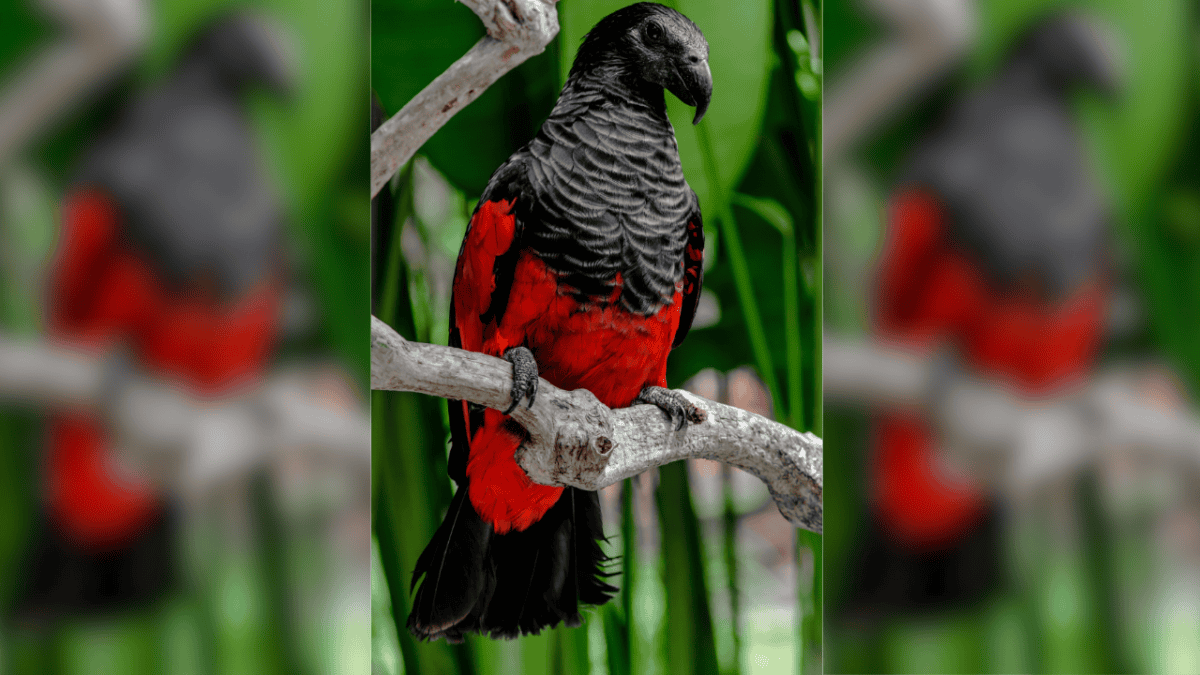When it comes to gothic aesthetics in the animal kingdom, few creatures can rival the Dracula Parrot. With its ominous appearance, eerie calls, and vulture-like features, this bird is nothing short of captivating. It’s signature red and black color creates the typical gothic elegance oozing that Transylvanian character making it worthy of its name. Even its hairdo accentuates its moniker and one wonders if it could talk, would it bare fangs and say “I wanna drink you blard.” Found only in the remote rainforests of New Guinea, it’s as rare as it is fascinating. Let’s uncover 10 intriguing facts about the Dracula Parrot, nature’s most gothic bird.
1. The Name “Dracula Parrot” Is No Coincidence

The Dracula Parrot (Psittrichas fulgidus), also known as Pesquet’s Parrot, earns its ominous name from its dark, cloak-like black feathers and striking scarlet plumage. Its blackened face, bare of feathers, gives it a ghostly, vulture-like appearance. It almost seems like this bird has stepped straight out of a gothic novel. This hauntingly beautiful look is perfect for its shadowy jungle home and has made it a favorite among bird enthusiasts.
2. A Parrot That Looks Like a Vulture

Unlike most parrots with their colorful, plump, and friendly appearance, the Dracula Parrot resembles a vulture more than its chatty relatives. Its bare, dark head isn’t a result of poor grooming but a brilliant adaptation. Feeding primarily on sticky fruits, particularly figs, its featherless face prevents residue from matting its feathers. This gives it the eerie appearance of a feathered grim reaper—a practical and spooky look rolled into one.
3. Endemic to New Guinea

The Dracula Parrot is native to the rugged and dense rainforests of New Guinea. Found at elevations between 600 and 1,800 meters, this bird prefers the mist-shrouded montane forests. Its habitat is as mysterious as its name, tucked away in remote, often inaccessible regions. This exclusivity adds to the bird’s mystique, making sightings rare and cherished by ornithologists and wildlife photographers alike.
4. It Has a Sweet Tooth for Figs

While other parrots boast diverse diets, the Dracula Parrot is a fig specialist. Its primary diet consists of just a few fig species, although it occasionally dines on blossoms and nectar. This frugivorous diet not only keeps it healthy but also plays a role in shaping its unusual anatomy, including its slender, curved beak ideal for slicing into fruit.
5. Silent Yet Haunting Vocalizations

Dracula Parrots aren’t chatty like their colorful cousins. Instead, they produce haunting, rasping growls and long-drawn screeches, adding to their gothic persona. These calls can sound almost ghostly echoing through the misty rainforests, evoking the sense that you’re in the lair of Count Dracula himself.
6. A Vulnerable Species
Unfortunately, the Dracula Parrot is classified as Vulnerable by the International Union for Conservation of Nature (IUCN). Its striking feathers make it a target for hunters, as locals use them in ceremonial costumes. Deforestation also poses a significant threat, with large swathes of its rainforest habitat being cleared for agriculture and development. The combination of hunting and habitat destruction has led to a rapid population decline, making conservation efforts critical for this unique species.
7. Gender Differences Are Subtle

In the Dracula Parrot, males and females look nearly identical, except for one small detail: males have a red spot behind their eyes. This subtle difference makes it possible to distinguish the genders during mating or territorial displays, but you’d need to be up close to spot it—if you’re lucky enough to see one at all!
8. Often Solitary, Sometimes Social

While they are generally solitary or found in pairs, Dracula Parrots occasionally gather in small flocks of up to 20 individuals, especially around fruiting trees. These temporary gatherings are fleeting, as the birds are nomadic and constantly on the move, following the fruiting cycles of fig trees across their range.
9. Unique Movement and Flight

Unlike other parrots, the Dracula Parrot prefers hopping and jumping between branches rather than climbing with its beak. Its flight is equally distinct, described as slow and heavy, reminiscent of a vulture. When in flight, the flash of its scarlet underwings against its dark body creates a striking spectacle, like a shadow gliding across the rainforest.
10. The Sole Member of Its Genus

The Dracula Parrot is the only member of the genus Psittrichas, setting it apart from all other parrots in the world. Its combination of gothic looks, specialized diet, and unique behaviors makes it one of the most distinctive and enigmatic birds alive today. This solitary position in the taxonomic tree adds to its allure, as it truly stands alone in the avian world.
The Dracula Parrot’s dramatic appearance and unique adaptations make it one of the most extraordinary birds on the planet. With its vulture-like head, dark cape-like feathers, and scarlet accents, it seems to have been conjured straight out of a gothic fantasy. Protecting this gothic marvel should be a priority for conservationists worldwide, ensuring future generations can marvel at its haunting beauty.
- 15 Most Breathtaking Hiking Trails Around the World - August 8, 2025
- Here’s What US Weather Can Expect in an Upcoming LA Nina Winter 2024 - August 8, 2025
- What Is a Virgo’s Secret Weapon and Complete Facts About This Earthy Perfectionist - August 8, 2025
